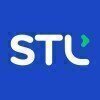Filter interviews by
Vantiva Test Engineer Staff Interview Questions and Answers
Vantiva Test Engineer Staff Interview Experiences
1 interview found
(1 Question)
- Q1. Explain how you use Kubernetes in your project?
- Ans.
I use Kubernetes to manage containerized applications, automate deployment, scaling, and operations.
Utilize Kubernetes to orchestrate and manage containers for seamless deployment and scaling
Leverage Kubernetes for automated rollouts and rollbacks of applications
Implement Kubernetes for load balancing and service discovery
Use Kubernetes for monitoring and logging of containerized applications
Skills evaluated in this interview
Top trending discussions






Interview questions from similar companies

I appeared for an interview before Jun 2024, where I was asked the following questions.
- Q1. What is ORL?
- Q2. What is the structure of an Optical Transport Network (OTN) frame?
- Ans.
An OTN frame consists of a structured format for transporting data over optical networks, ensuring efficient and reliable transmission.
OTN frames are composed of a fixed-size payload and overhead for management.
The main components include the Optical Payload Unit (OPU), Optical Transport Unit (OTU), and Forward Error Correction (FEC).
The OPU carries client signals, while the OTU encapsulates the OPU for transport.
FEC e...
Interview Preparation Tips

I applied via Walk-in and was interviewed in Mar 2023. There were 5 interview rounds.

(1 Question)
- Q1. Lte architecture and ip based questions
(1 Question)
- Q1. Lte architecture, ip based
(1 Question)
- Q1. Lte architecture and ip
(1 Question)
- Q1. What is region for job change and salary expectations

I applied via LinkedIn and was interviewed in Feb 2023. There were 3 interview rounds.

(3 Questions)
- Q1. Ask salary expectations
- Q2. Salary Discussion and relocation process
- Q3. Dacumentation and onbording
(2 Questions)
- Q1. Alarm troublesooting otn
- Ans.
Troubleshooting alarms in Optical Transport Networks (OTN) involves systematic diagnosis of issues affecting signal integrity.
Check alarm indicators on the OTN equipment to identify specific issues.
Verify physical connections and ensure all cables are securely connected.
Examine the configuration settings for any discrepancies or errors.
Use diagnostic tools to analyze signal quality and performance metrics.
Review logs f...
- Q2. OTN fundamental troubleshooting.
Interview Preparation Tips

I applied via Naukri.com and was interviewed in Aug 2023. There were 3 interview rounds.

(1 Question)
- Q1. Regarding working profile
(1 Question)
- Q1. Personal details
Interview Preparation Tips

I applied via Naukri.com and was interviewed in May 2024. There were 3 interview rounds.
(2 Questions)
- Q1. About Role and Responsibilities
- Q2. Knowledge test on Resume
(2 Questions)
- Q1. Day to Day activities in previous Organisation
- Ans.
In my previous role, I focused on software development, team collaboration, and project management to deliver high-quality solutions.
Developed and maintained software applications using Java and Python, ensuring code quality through regular reviews.
Collaborated with cross-functional teams, including product management and QA, to define project requirements and timelines.
Led daily stand-up meetings to discuss progress, ...
- Q2. Hypothical Questions
(2 Questions)
- Q1. Current CTC and take home
- Q2. Expected CTC and take home
- Ans.
Expected CTC and take home should be based on industry standards and the candidate's experience and skills.
Expected CTC should be in line with industry standards for the position and the candidate's experience level.
Take home pay should be calculated after deductions like taxes and insurance.
Candidates can research average salaries for similar roles in the industry to get an idea of what to expect.
Negotiation is common...
Interview Preparation Tips
- Quality Tools and methodology
- RCA
- 7Qc
- 8D
- 4M

(1 Question)
- Q1. Promises,async await,callback,api integration
(1 Question)
- Q1. Performance optimization,usecallback,let const var

I applied via Referral and was interviewed in May 2022. There were 3 interview rounds.

(1 Question)
- Q1. Prepare all the things related to your work
(1 Question)
- Q1. General discussion about my life and sallery.

Senior Engineer Interview Questions & Answers
Arista Networksposted on 26 Apr 2025
I appeared for an interview before Apr 2024, where I was asked the following questions.
- Q1. Linked list CRUD operations
- Q2. Invert the bits
- Ans.
Inverting bits means flipping each bit in a binary representation from 0 to 1 and from 1 to 0.
Bitwise NOT Operator: In many programming languages, the bitwise NOT operator (~) can be used to invert bits. For example, ~5 (binary 0101) results in -6 (binary 1010).
Binary Representation: To invert bits, first convert a number to its binary form. For example, the binary of 6 is 110, and inverting it gives 001.
Example: Inver...

I appeared for an interview before Apr 2024, where I was asked the following questions.
- Q1. Dijkstra algo , graphs and binary trees.
- Q2. Round 2 : Optimization coding rounds difficulty level hard
Vantiva Interview FAQs
Tell us how to improve this page.
Vantiva Interviews By Designations
- Vantiva Senior Associate Interview Questions
- Vantiva Software Engineer Interview Questions
- Vantiva Senior Software Engineer Interview Questions
- Vantiva Lead QA Interview Questions
- Vantiva Test Engineer Staff Interview Questions
- Vantiva Sdet Automation Test Engineer Interview Questions
- Vantiva Accounts Payable Accountant Interview Questions
Interview Questions for Popular Designations
Overall Interview Experience Rating
based on 1 interview experience
Interview Questions from Similar Companies
Vantiva Test Engineer Staff Reviews and Ratings
based on 2 reviews
Rating in categories
|
Senior Software Engineer
39
salaries
| ₹13 L/yr - ₹23.1 L/yr |
|
Senior RPA Developer
35
salaries
| ₹22 L/yr - ₹30 L/yr |
|
Test Engineer Staff
28
salaries
| ₹19 L/yr - ₹36.8 L/yr |
|
RPA Developer
21
salaries
| ₹23 L/yr - ₹24 L/yr |
|
Software Engineer
18
salaries
| ₹9 L/yr - ₹12.6 L/yr |

Indus Towers

Sterlite Technologies

Nokia Networks

Cisco
- Home >
- Interviews >
- Vantiva Interview Questions








